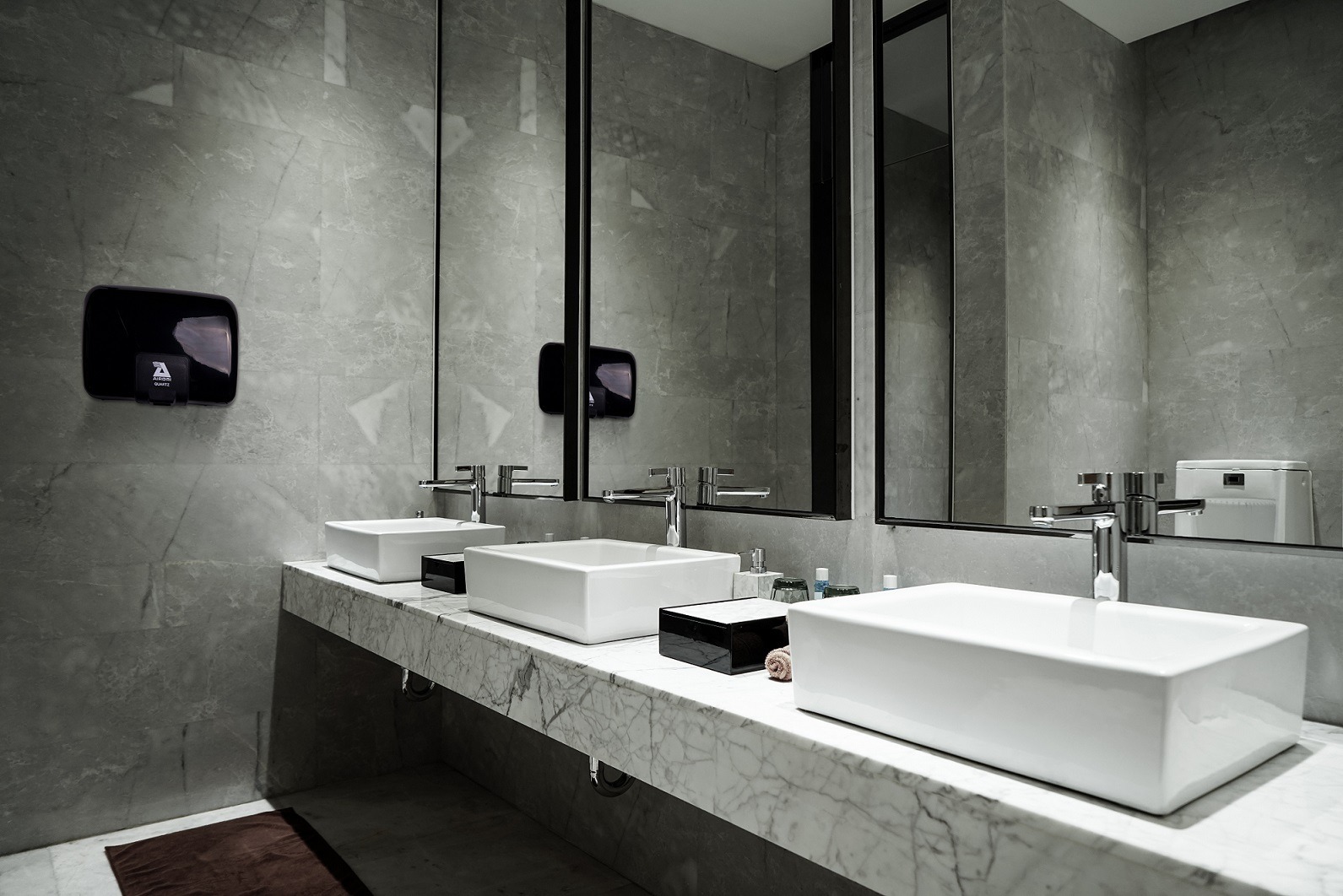Green initiatives are becoming more and more the norm as UK companies realise the numerous benefits to workplace sustainability, from reduction in expenditure to customer perception and staff satisfaction. Many businesses are already striving towards reducing their carbon footprint and improving eco credentials but there is still room for improvement in most commercial properties, from offices to sporting arenas, factories, and hospitality and retail venues.
Your commercial washroom, a space that is continually in use and constantly demands high levels of resources, is a great place to start your sustainability journey – we’ve identified some key areas below that will have a huge impact on creating a green washroom.
Take steps towards saving water
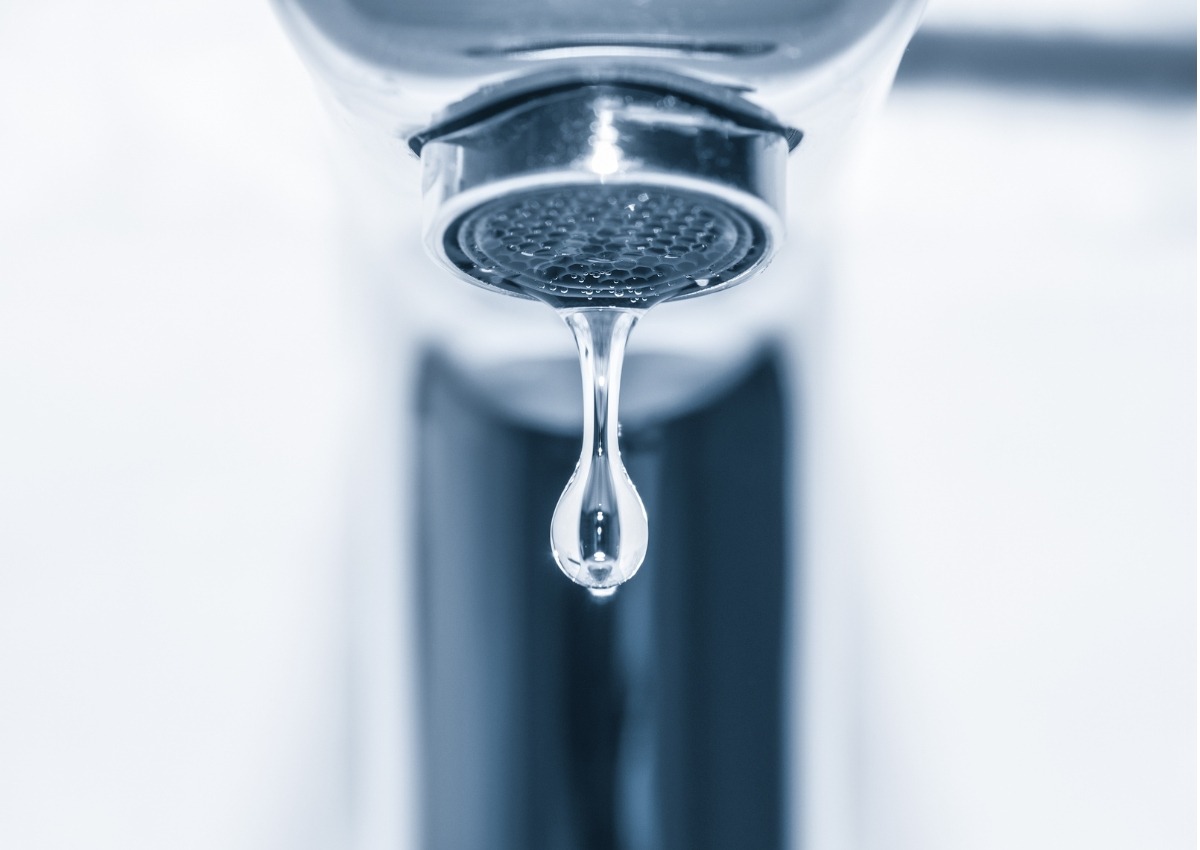
Water companies in the UK treat and supply almost 18 billion litres of water every day and, according to South Staffs Water, in an average office-based business, a whopping 63% of supplied water literally ends up down the toilet.
Using water more efficiently means that the water being taken out of rivers and reservoirs, and the knock-on ecological impact, can be minimised, as well as contributing to significant financial savings.
The simplest way to conserve water is to check for leaks in your washroom. Research has found that just one dripping tap can waste around 15 litres of water a day, with a leaky toilet wasting up to 400 litres of clean drinking water every day. It is estimated that 5-8% of UK toilets are leaking at any one time – literally money draining away.
Washroom taps that are activated by motion sensor have a huge water saving advantage over manually operated taps as they are designed to function only when the user’s hands activate the sensor. The flow of water is controlled to a set volume or time period, meaning that the taps can’t be left running accidentally. There are also associated cleanliness and hygiene benefits as the user doesn’t have to touch the taps which, in a busy commercial bathroom, may be harbouring germs and bacteria.
You can also reduce water waste by choosing toilets that are more water efficient. Dual flush toilets have two buttons that flush different amounts of water through the system, depending on what you need to flush away. They generally use between 4 and 6 litres of water, as opposed to traditional style systems which use up to a whopping 13 litres per flush, and can be retro fitted on existing toilets.
Replacing standard urinals, which use around 4.5 litres per flush, with waterless urinals where waste is carried down through a seal in the cartridge by gravity, is another option for washroom water reduction and could save up to 100,000 litres per urinal every year.
Switch on to LED lighting
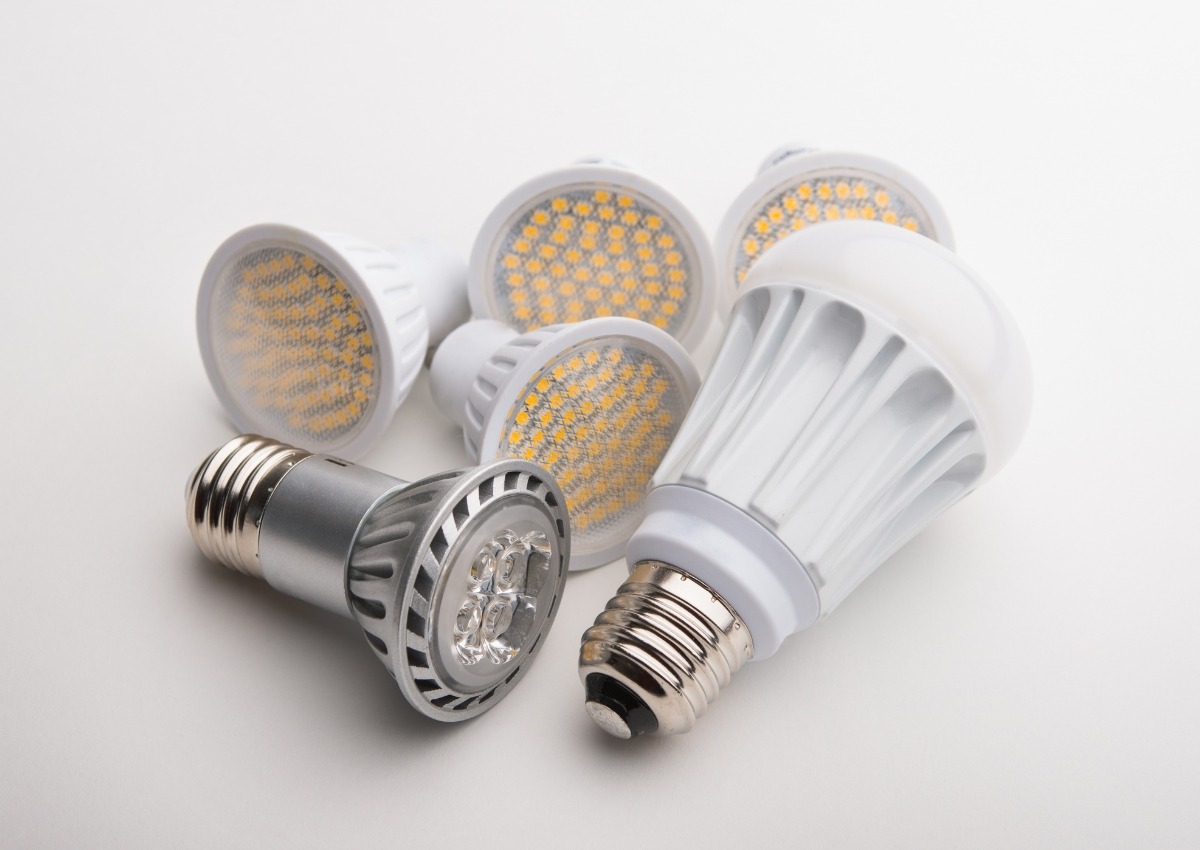
Switching from traditional fluorescent to energy-saving LED light bulbs is an easy step to take towards the goal of having a greener washroom. LED bulbs consume on average 80% less energy and last up to 25 times longer, and another plus point – they don’t contain toxic substances and can be easily recycled.
It’s also worth considering motion sensor lighting for your washroom. Passive infrared sensors (PIR sensors) can be fitted to existing lights so that they are only activated when it’s dark enough to need them and someone is using the washroom, meaning you won’t be needlessly using electricity.
Install eco-friendly hand dryers
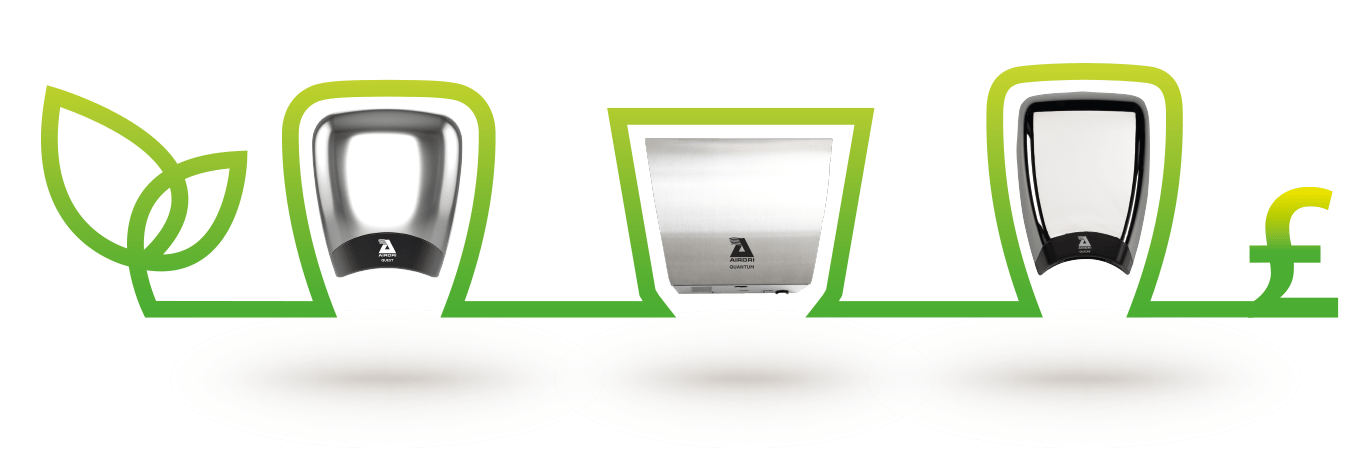
It doesn’t take long for even a small business to generate a vast amount of paper towel waste and with just one paper towel dispenser sending 160kg of waste to landfill each year, the environmental cost of using paper towels is huge.
As paper towels are categorised as contaminated waste, they can’t be recycled, meaning that they all end up in landfill, usually in plastic bags. The decay of paper products in landfill produces methane gas, which has a global warming potential of 28 times that of carbon dioxide. Paper towel production itself has a huge impact on the environment, with every step of the process, from manufacturing to transportation, packaging and storage all producing significant levels of CO2.
Choosing energy efficient, eco-friendly hand dryers instead of paper towels will save you up to 97% on annual running costs whilst also eliminating the need to refill and dispose of paper towels, lowering maintenance costs.
Visit our paper towel calculator to work out the environmental impact of your business.
Swap out chemical cleaning products

Studies have shown that chemical cleaning products can actually contribute to indoor air pollution, so switching to greener cleaners made from natural enzymes that have no added nasties, reduced bleach content and are fully bio-degradable, can have health as well as ecological benefits.
Rather than killing the harmful bacteria like traditional chemical cleaners, an eco-friendly cleaning product releases natural ‘good’ bacteria which feast on the dirt and grime that the ‘bad’ germs eat and live on, basically making it impossible for them to survive. Probiotic cleaning agents are more effective at long-term bacteria control and the reduction of chemicals takes some pressure off sewage systems whilst also meaning that fewer toxins end up in rivers and oceans.
Cut down on plastic and packaging
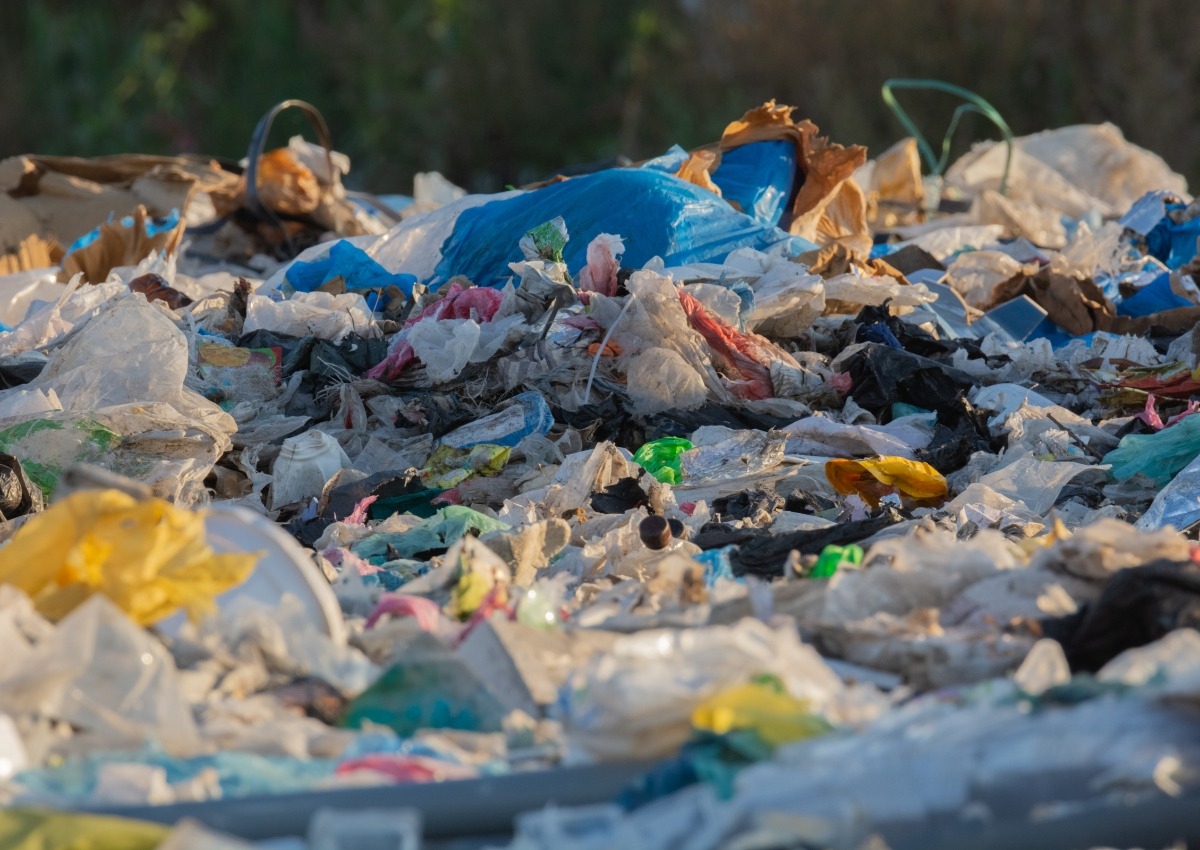
A busy washroom can go through vast amounts of toilet paper, soap and cleaning products in its day-to-day operations, most of which comes in plastic packaging. With around 79% of all plastic waste accumulating in landfills or ending up in our oceans, reducing plastic packaging waste is a simple step towards doing your bit for the environment.
Look for suppliers who use 100% recyclable packaging, install refillable soap dispensers and buy in bulk – all impactful ways to significantly cut down on packaging and plastic waste.
Commercial washrooms go through huge amounts of toilet paper, so it’s worth using 100% post-consumer recycled, chlorine-free products. Every ton of recycled paper saves an unbelievable 17 trees and enough energy to power an average three-bedroom house for an entire year. Recycling paper rather than making it from raw materials also produces 73% less air pollution.
Work with like-minded organisations
Working towards sustainability doesn’t have to a be painful process, more a gradual transition. It’s about making conscious decisions. When it comes to renewing supplies think about choosing companies that have the same ethical and environmental commitments as yours is a step towards your green goals.
Consider washroom longevity
Finally, you should consider the durability of your washroom installation or refurbishment. By considering maintainability and using ecologically sound materials and products such as plastic-free soap dispensers and recyclable stall partitions made from stainless steel or HDPE plastic, you can give extend the lifespan of your commercial washroom, therefore making it more sustainable. A well thought out, modern washroom with eco-friendly fixtures and fittings and a clean, functional design makes a good impression on both visitors and staff alike and should stand the test of time even in high traffic areas, cutting down on both landfill waste and the unnecessary consumption of raw materials.


